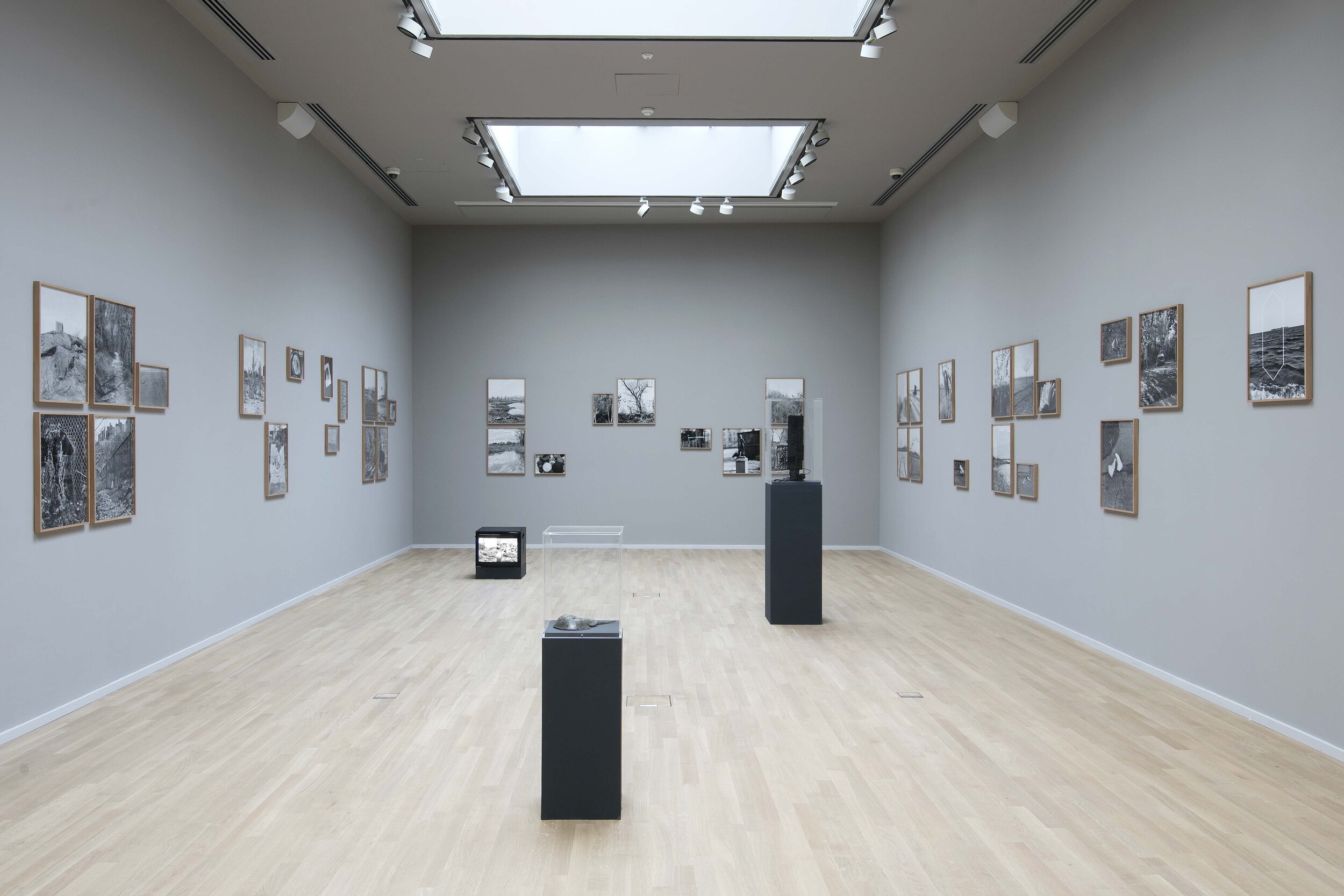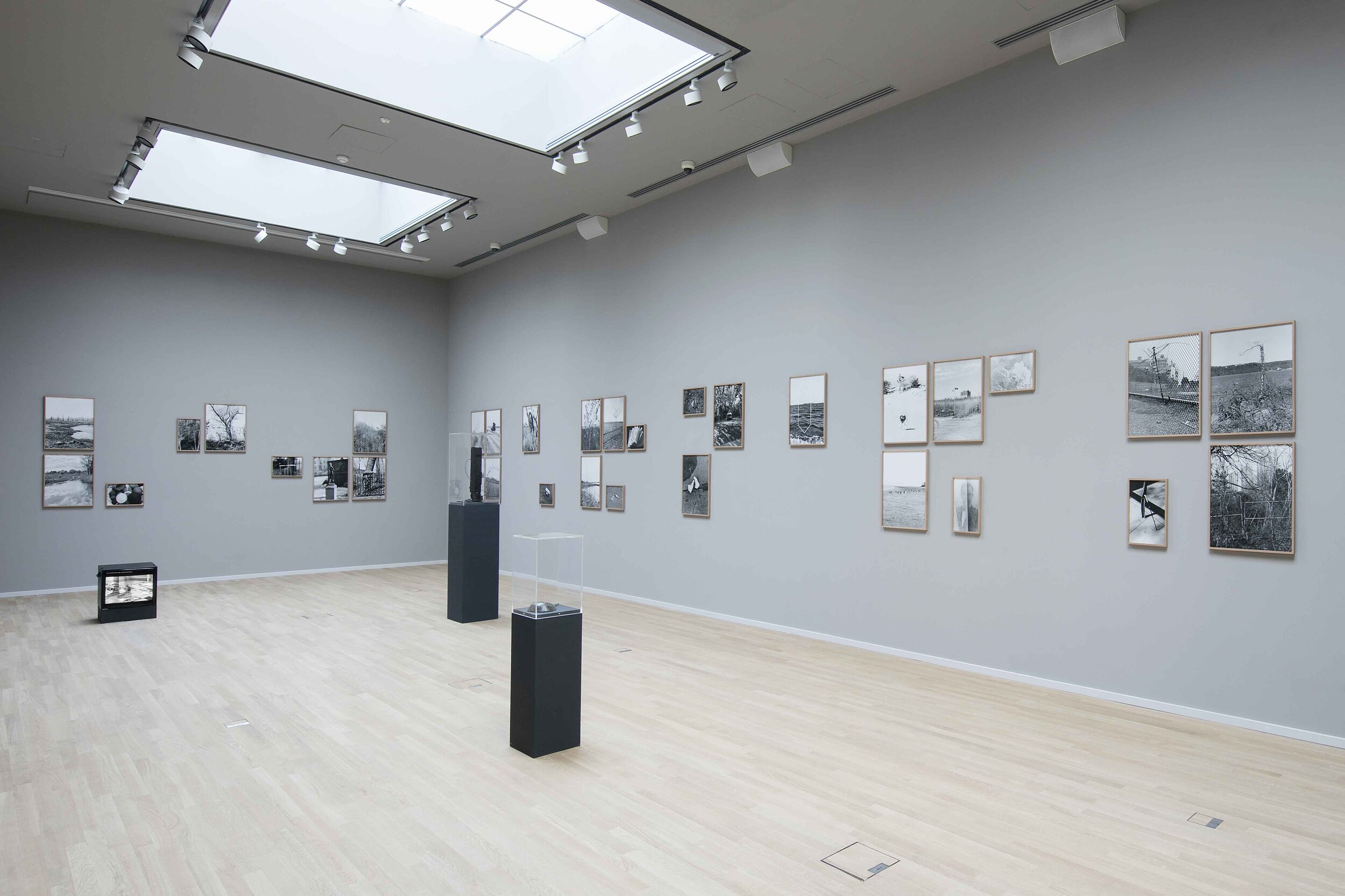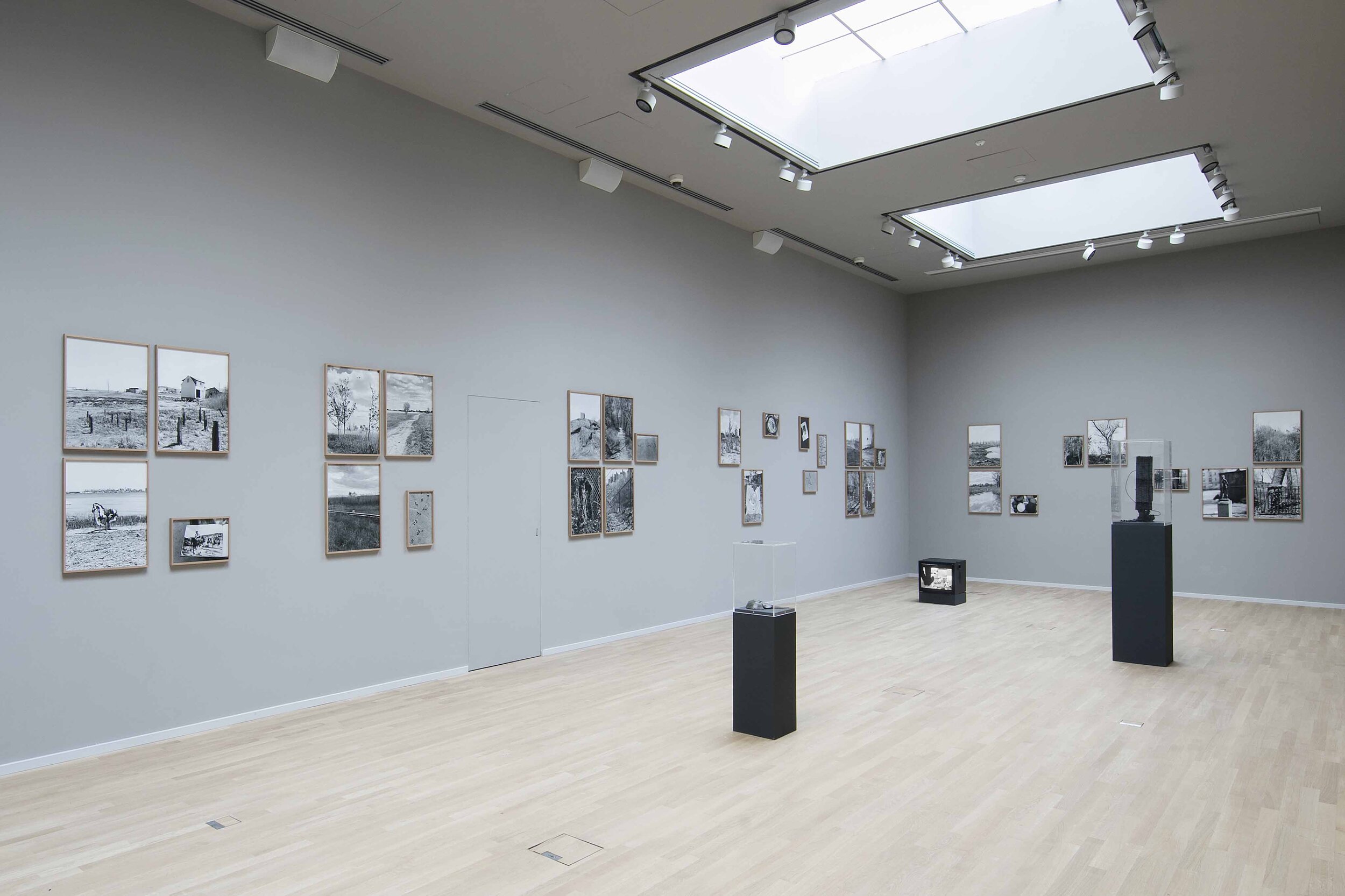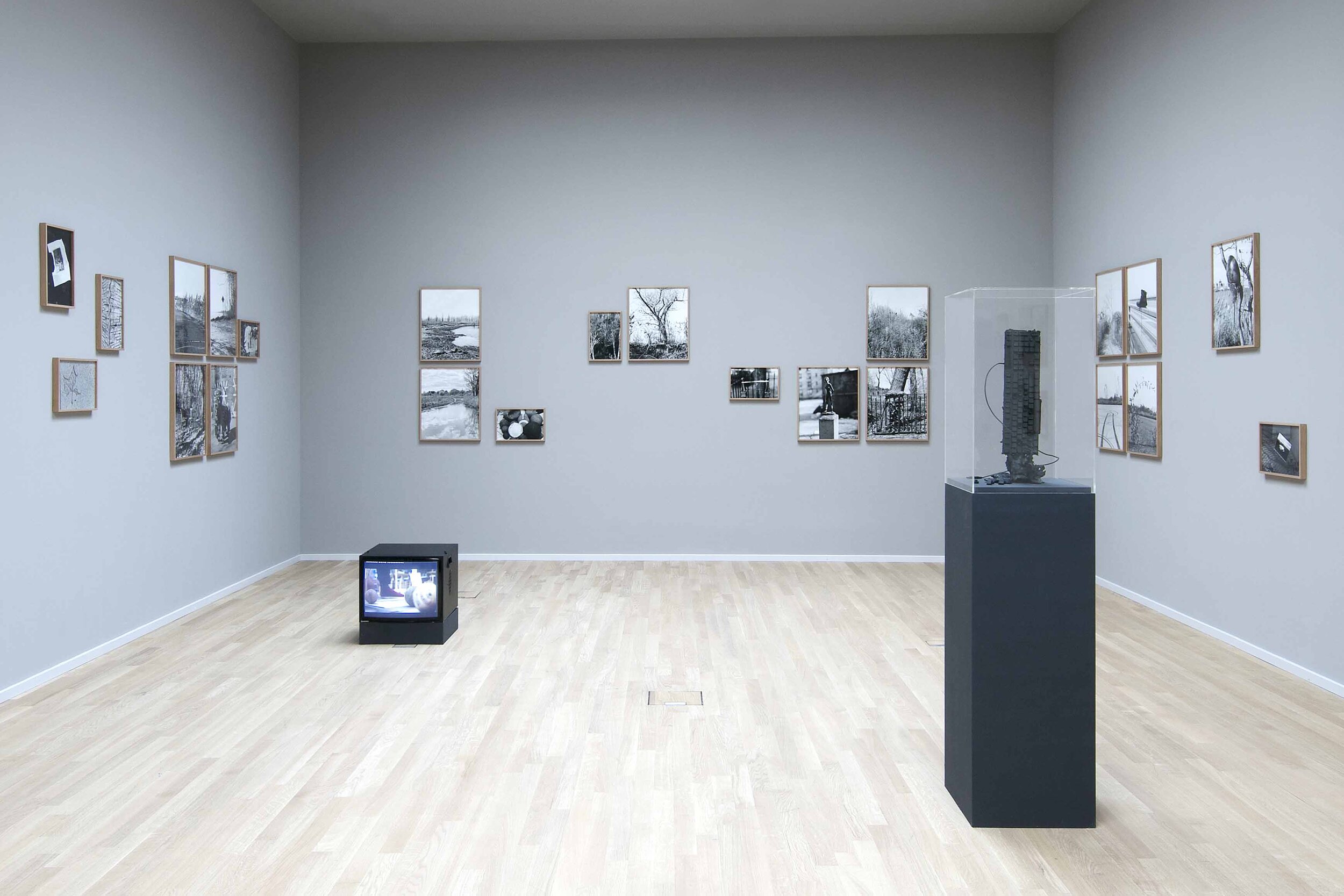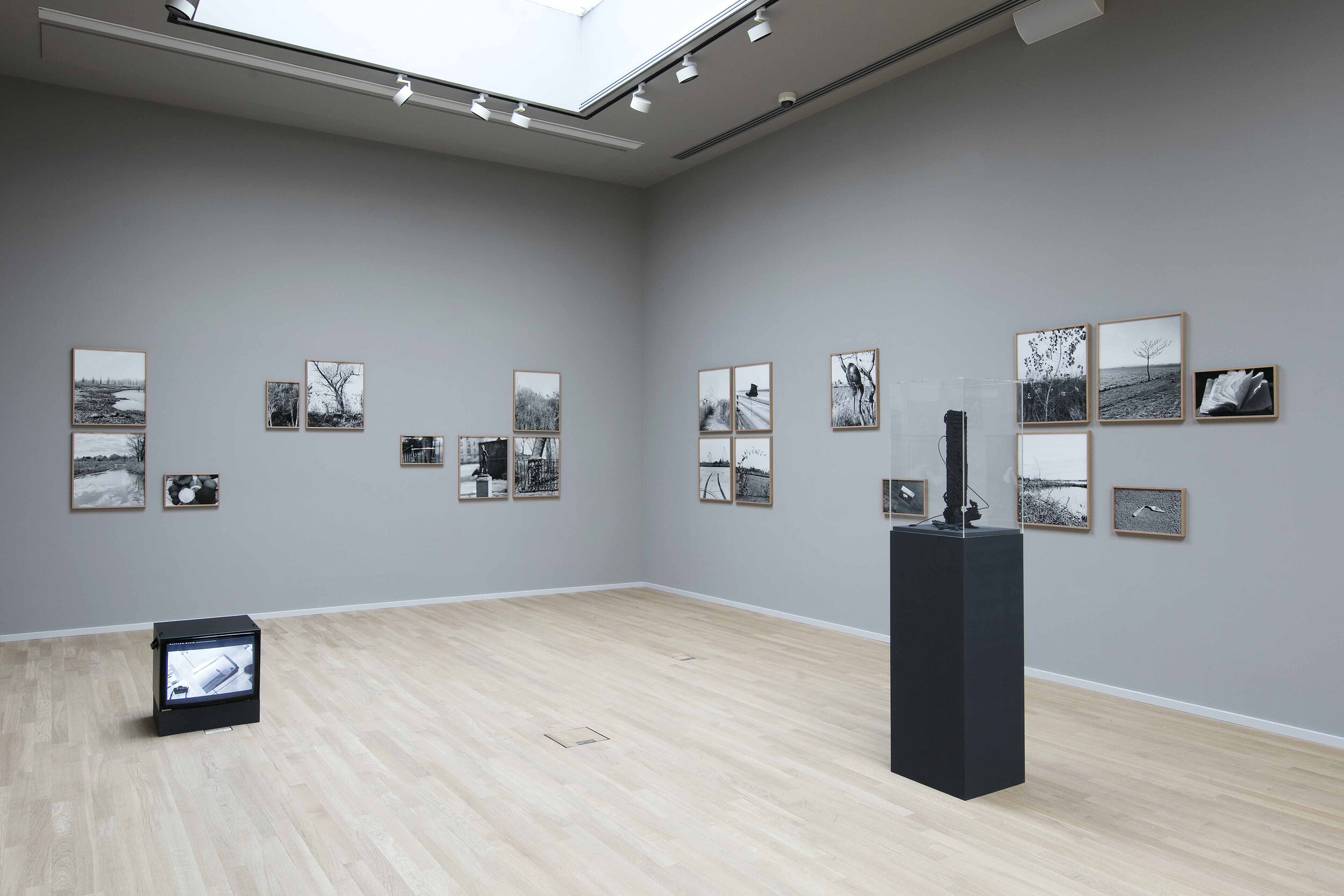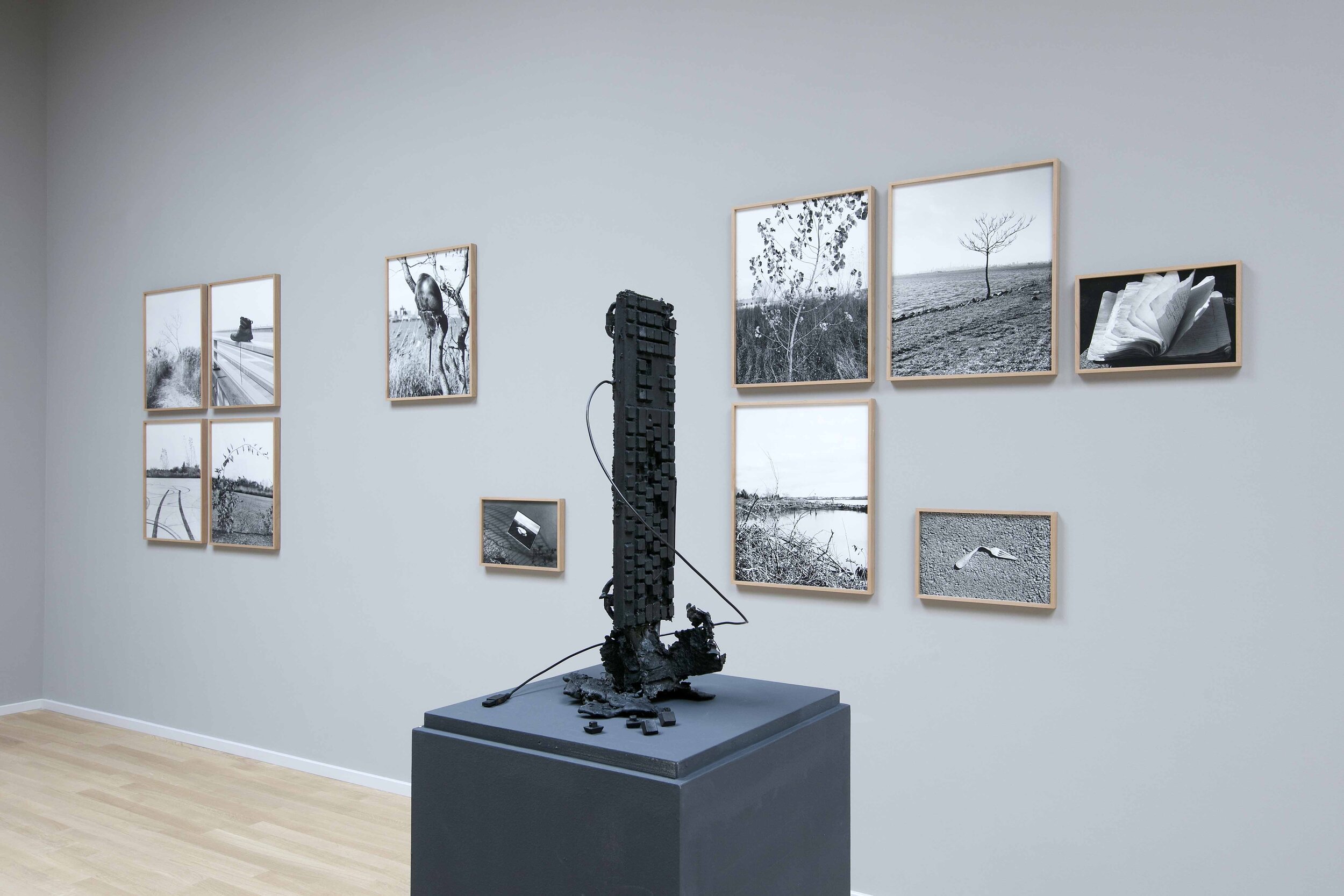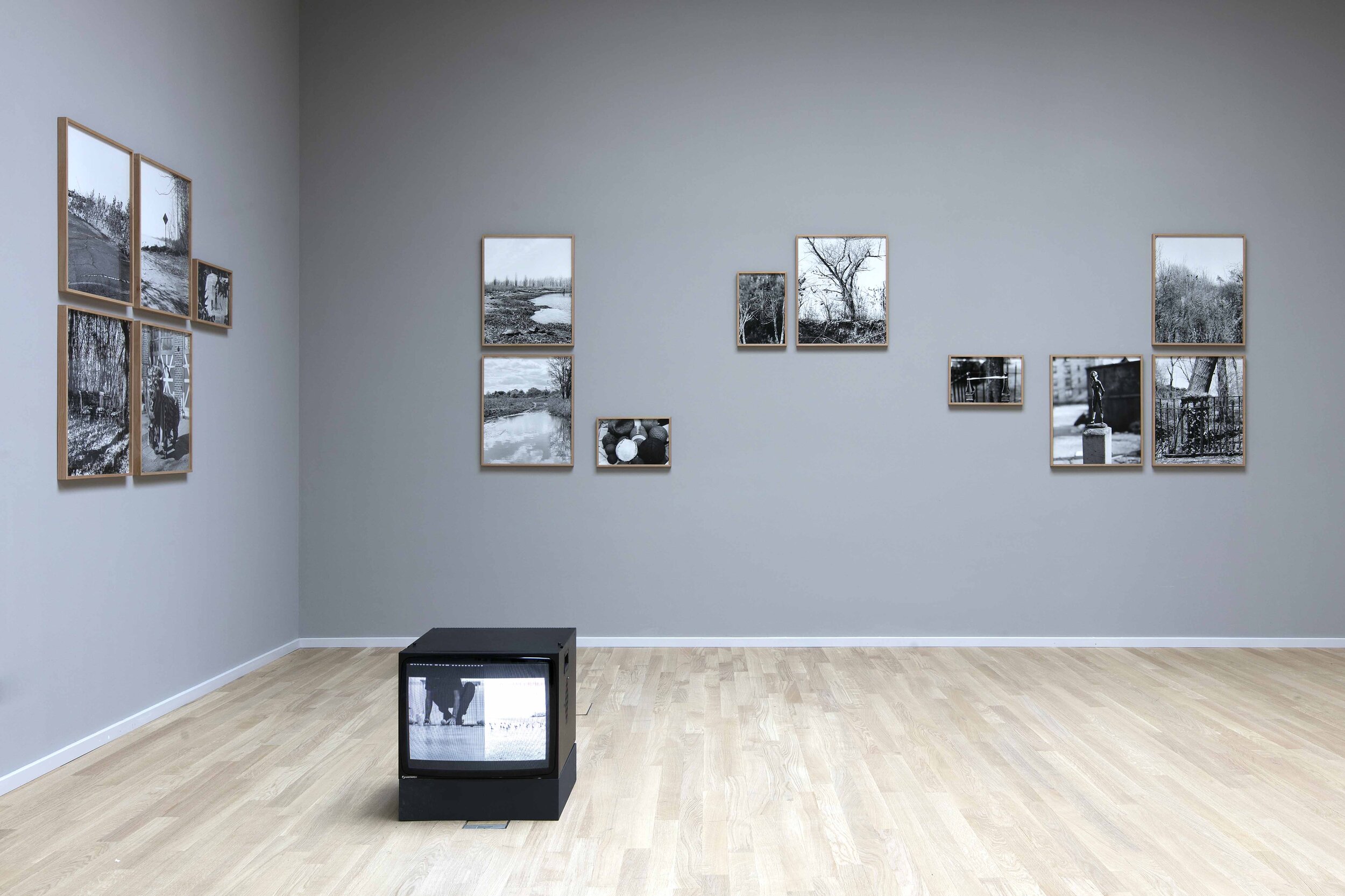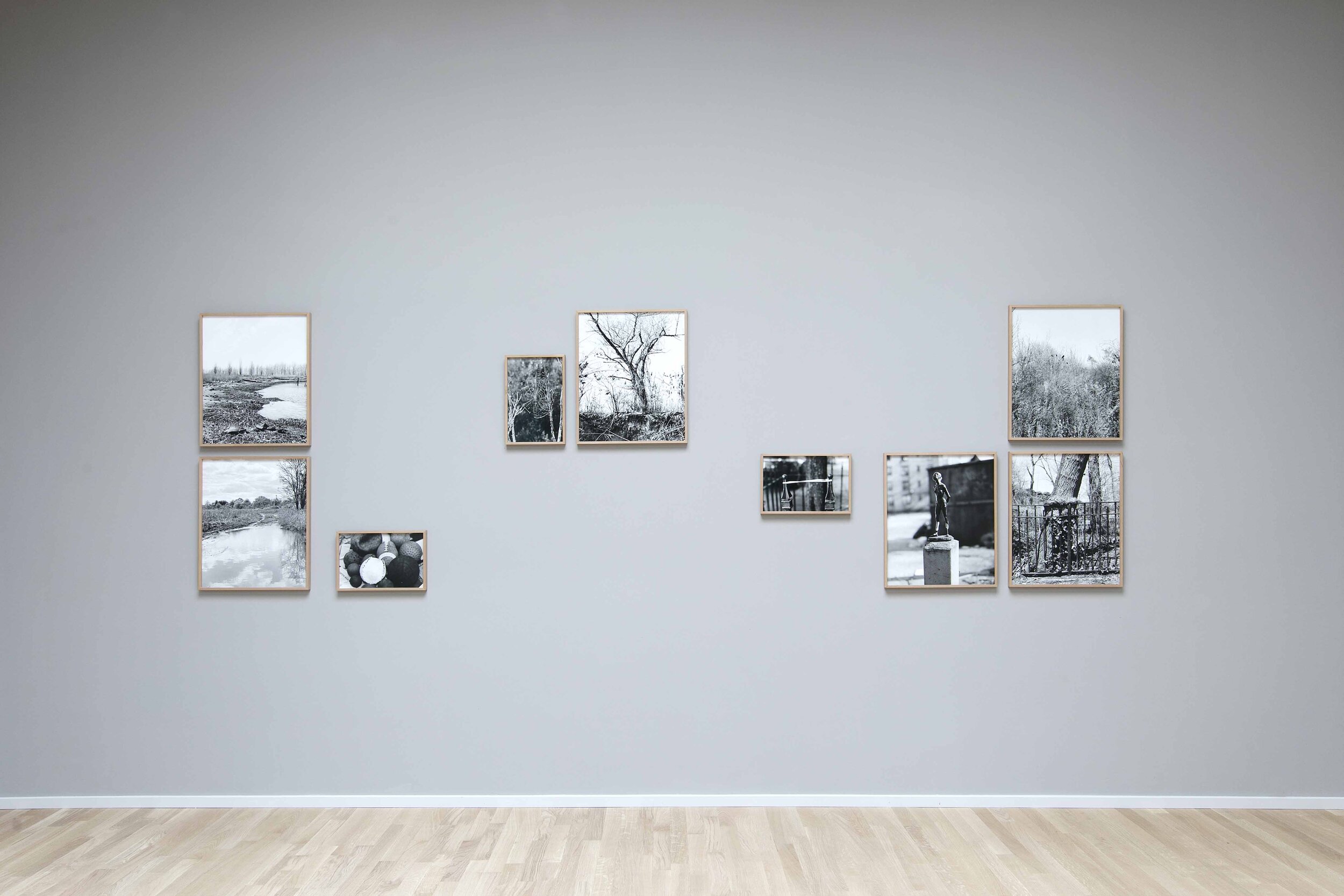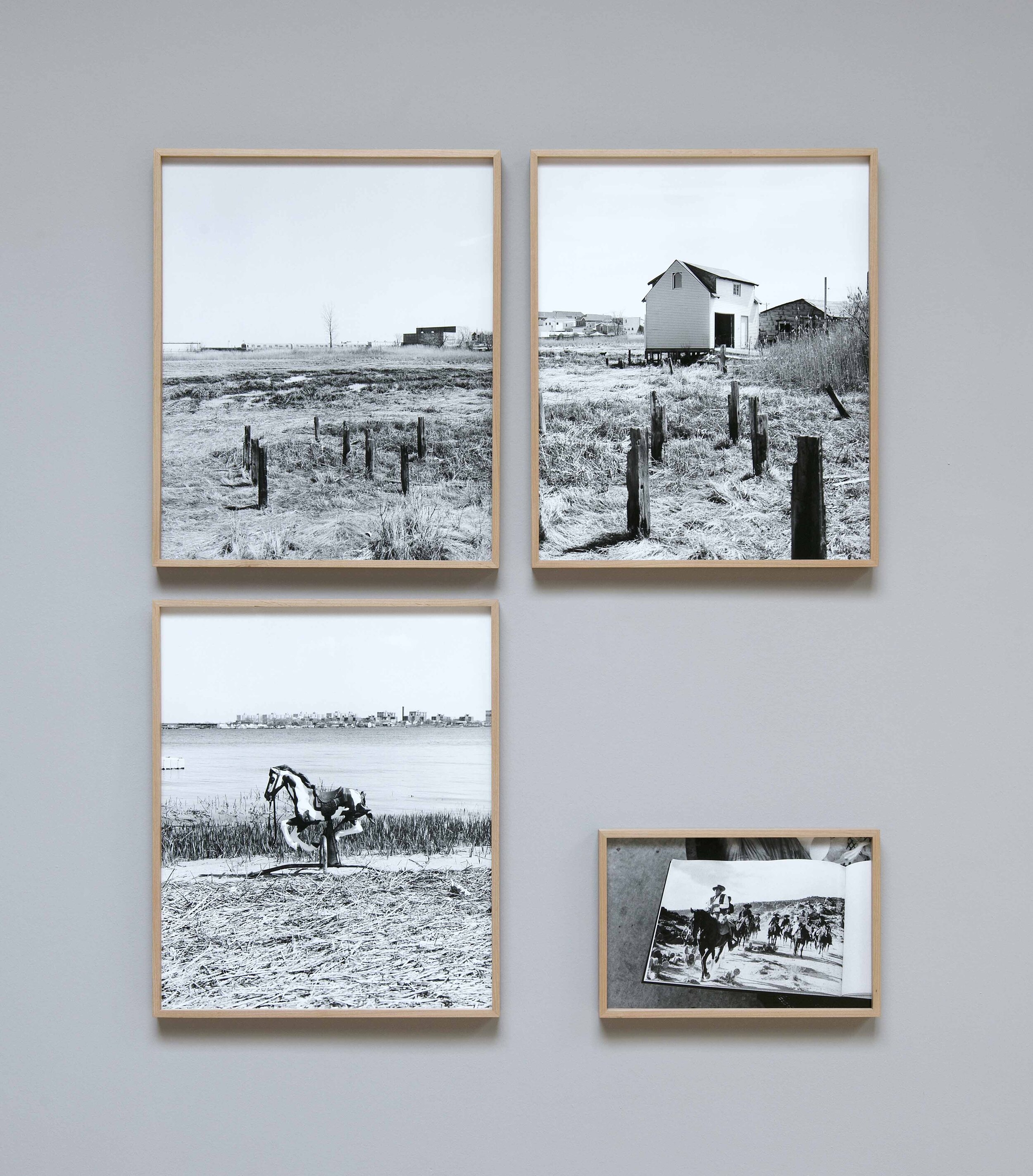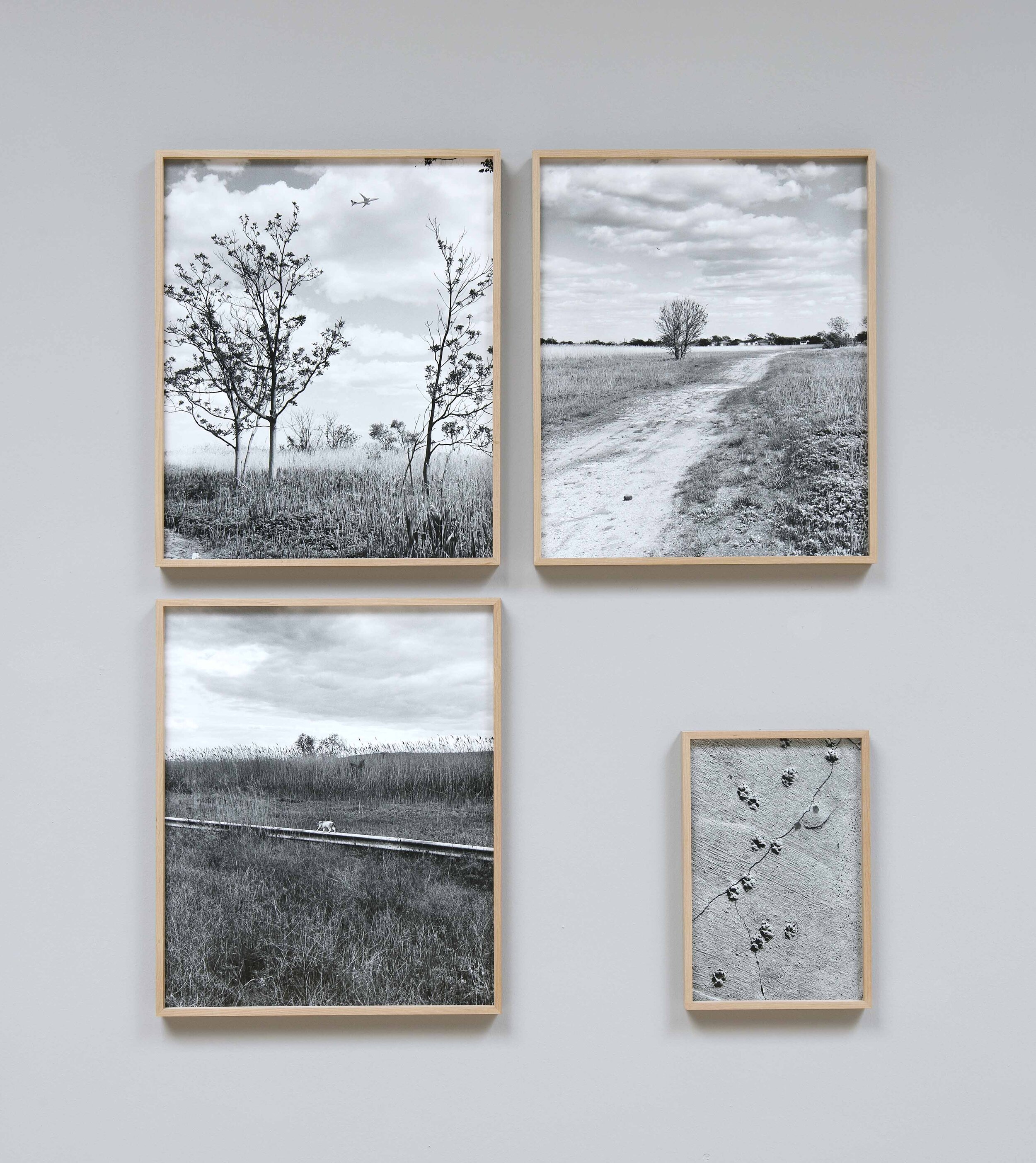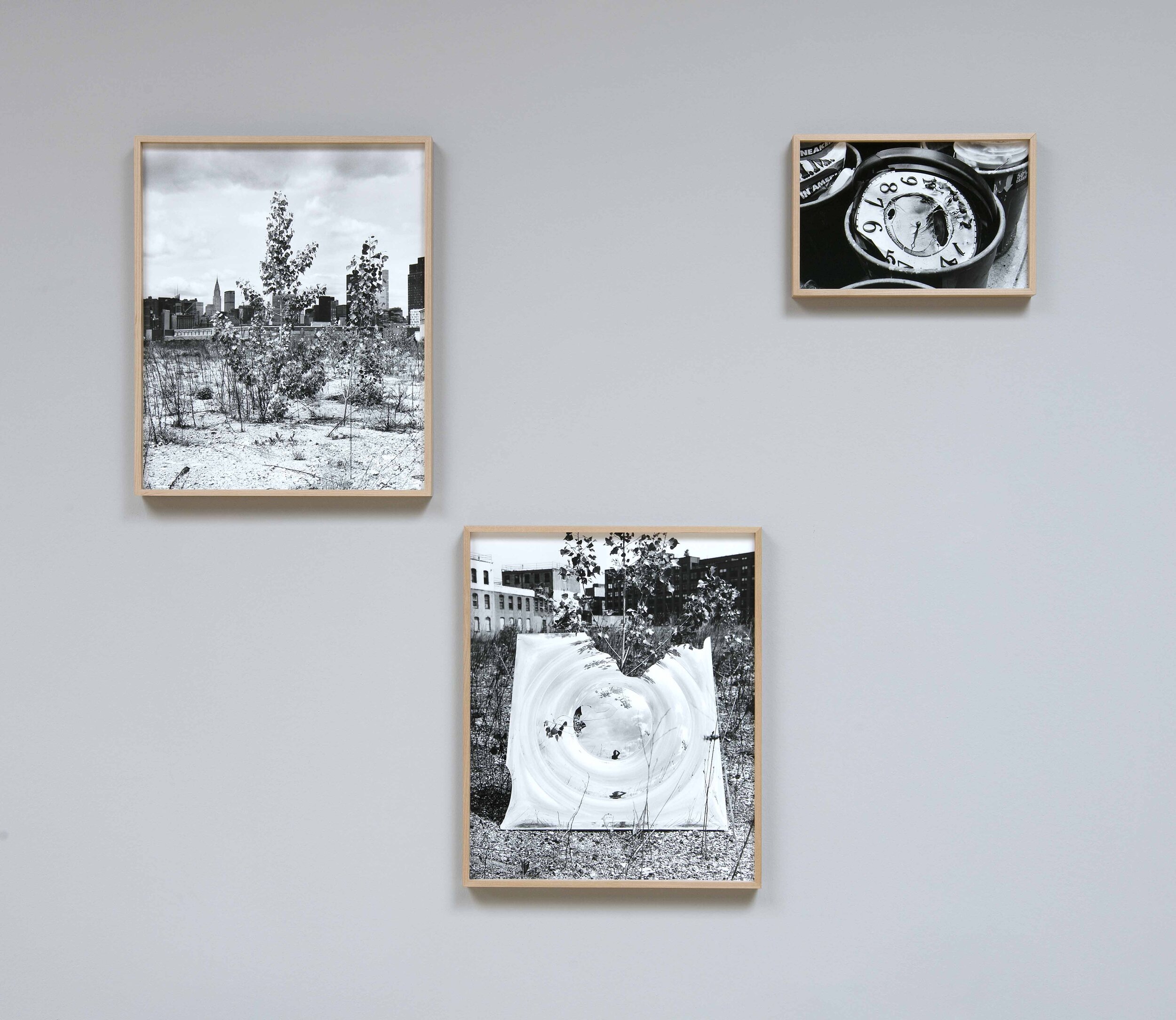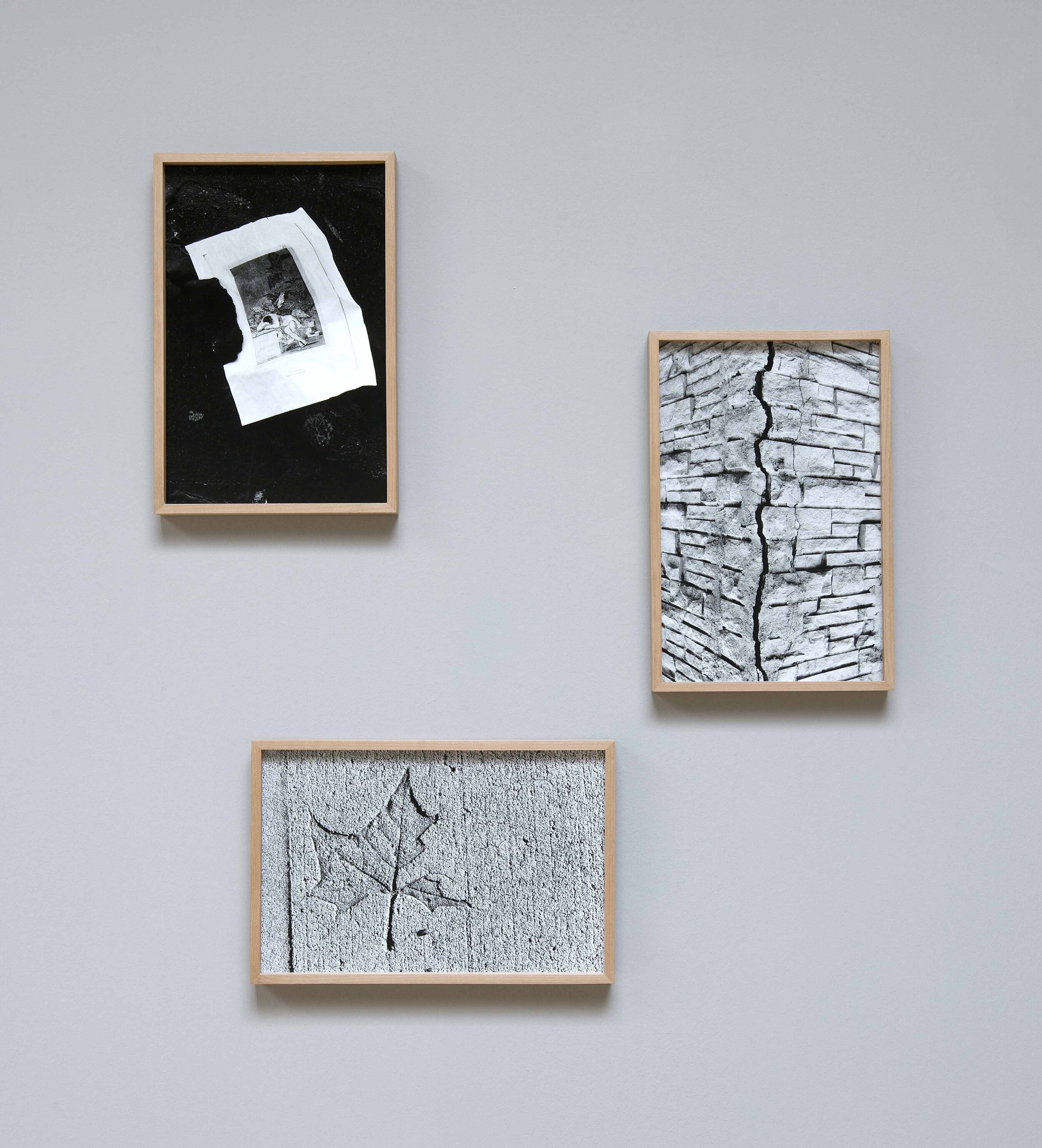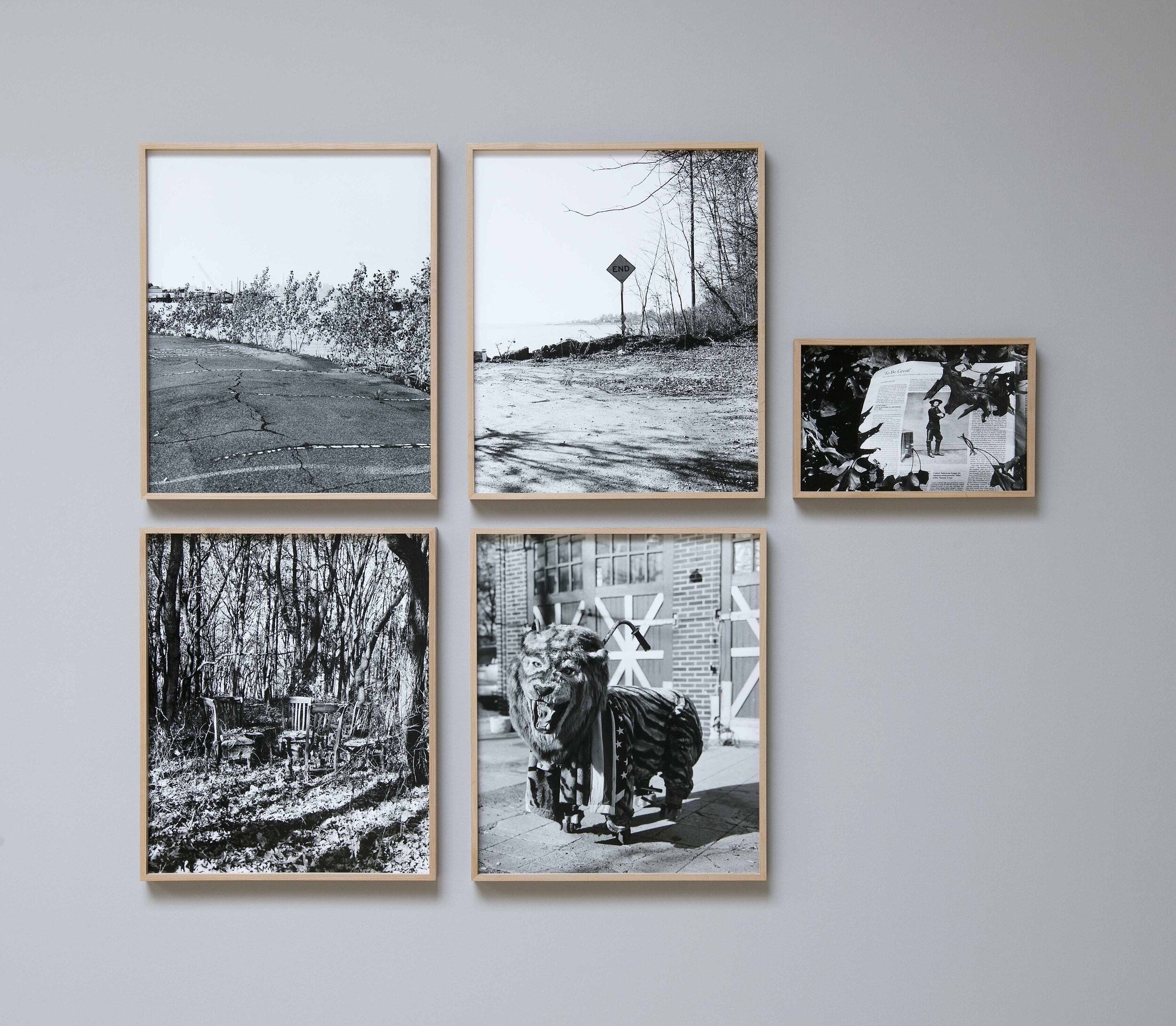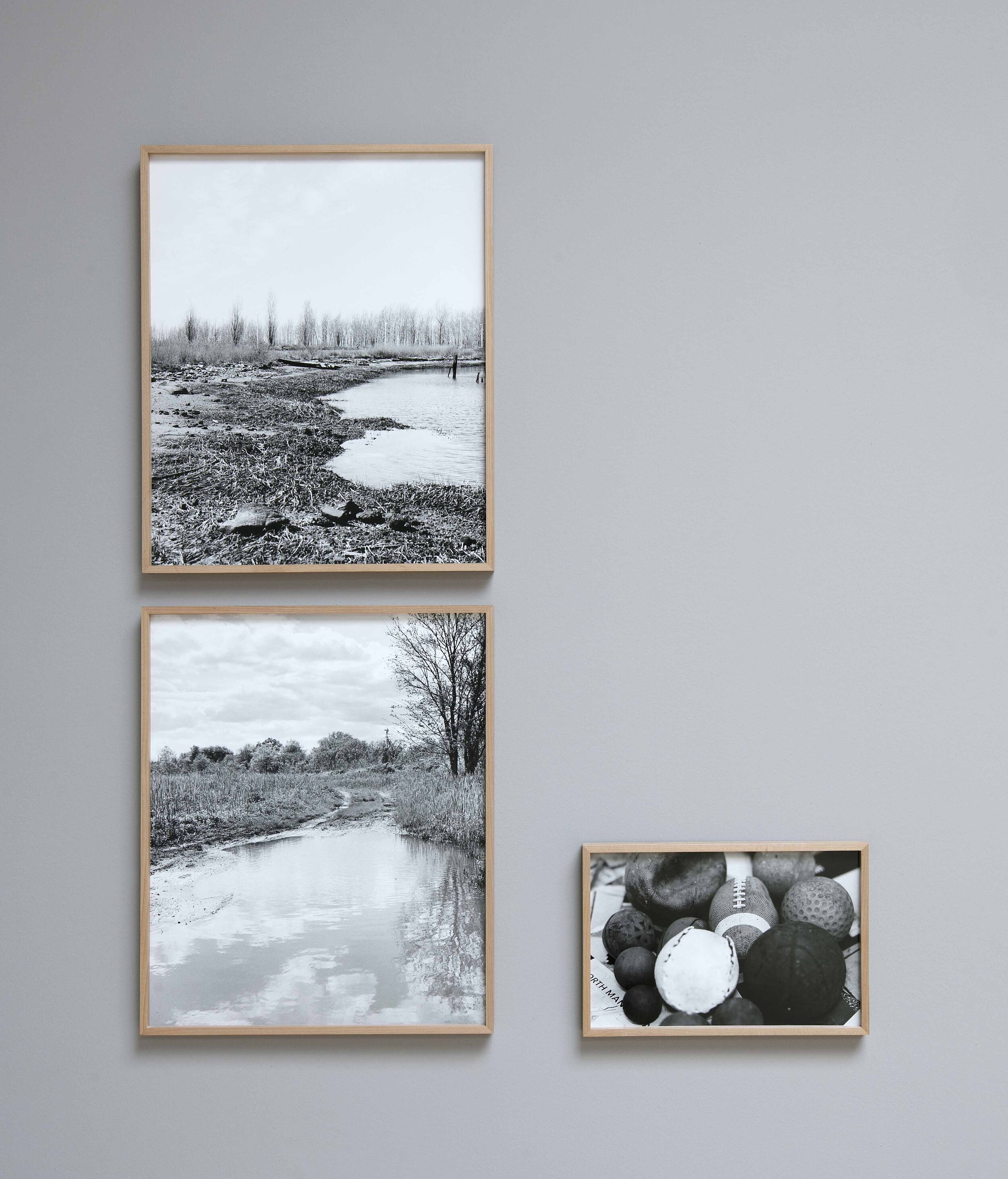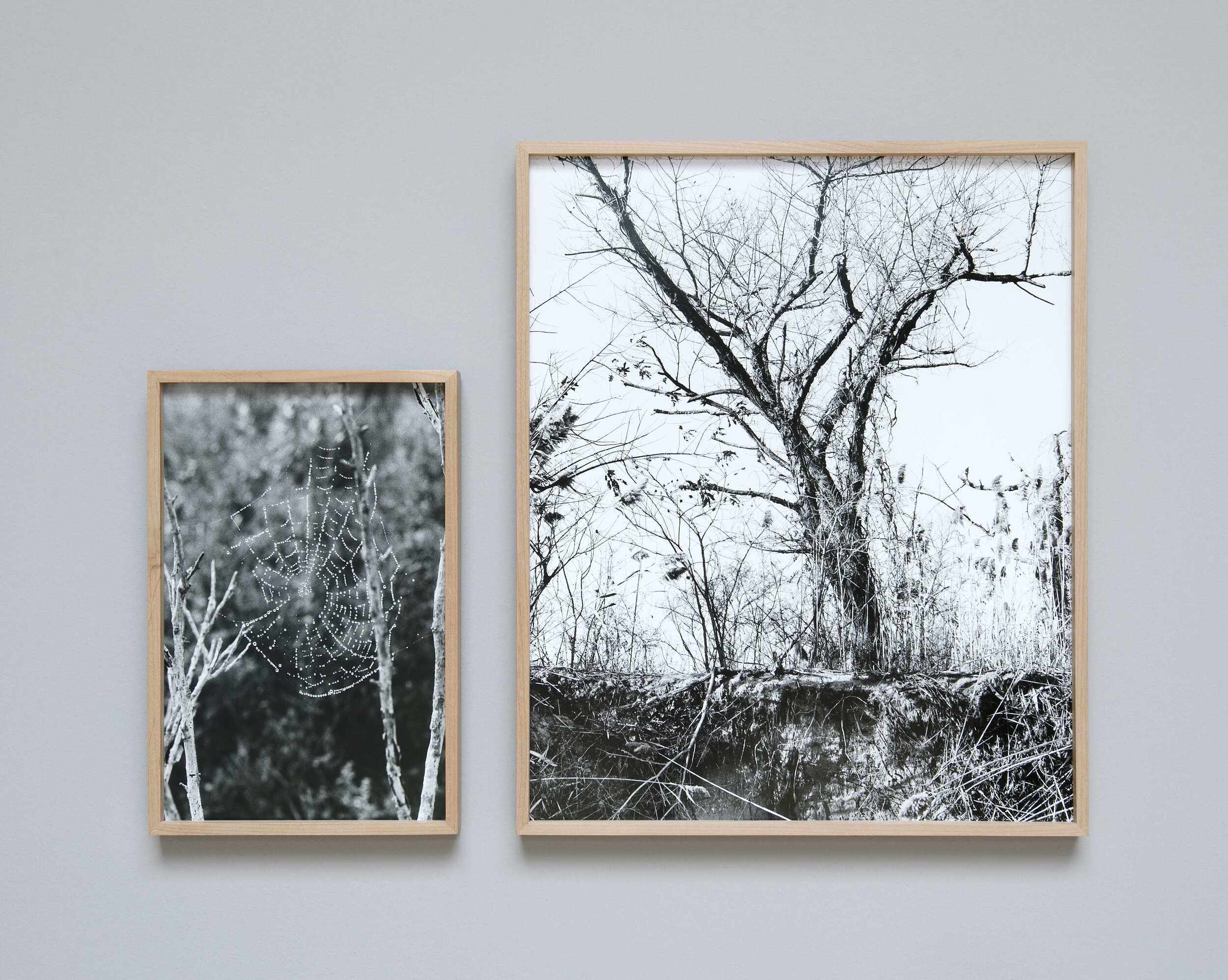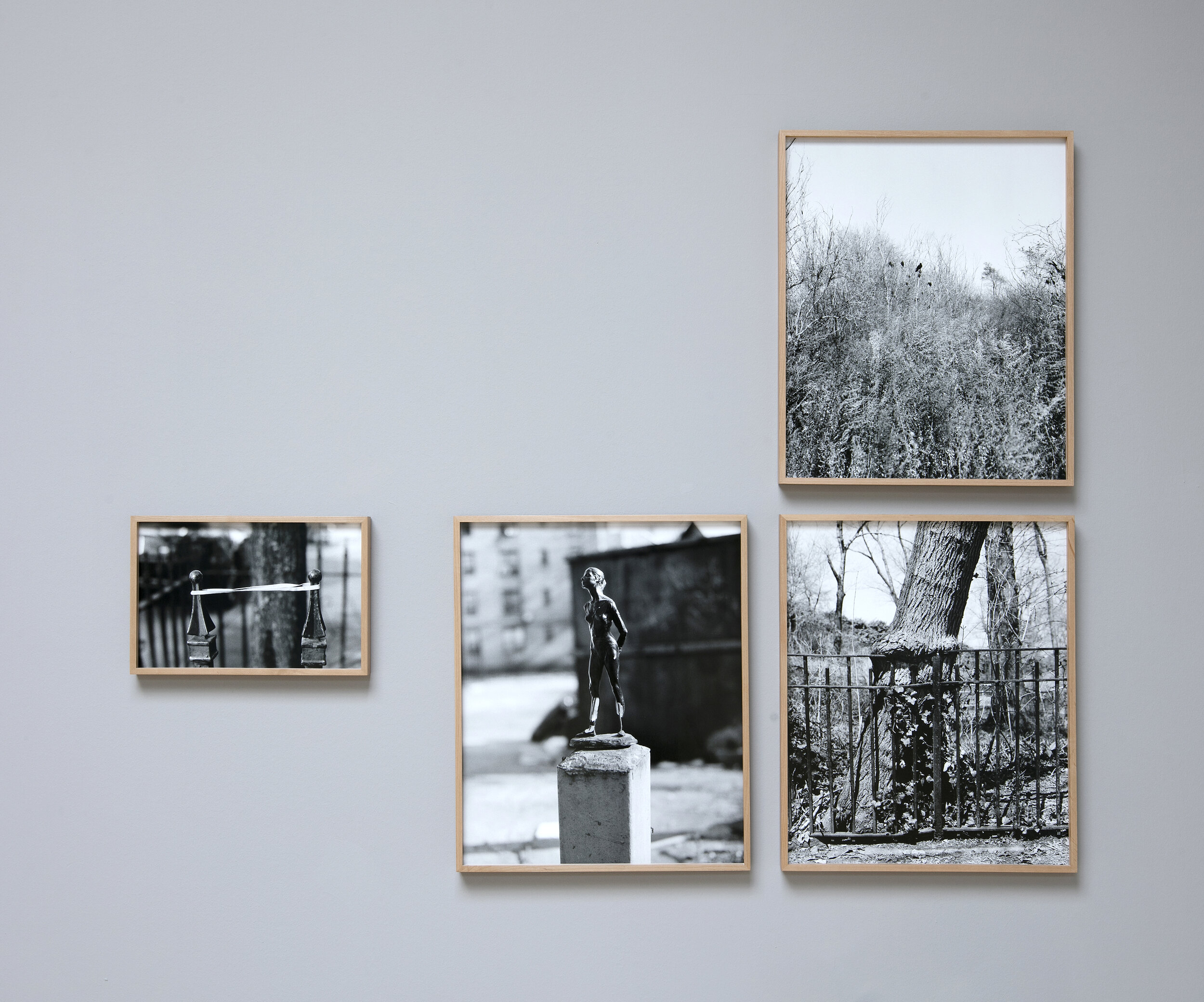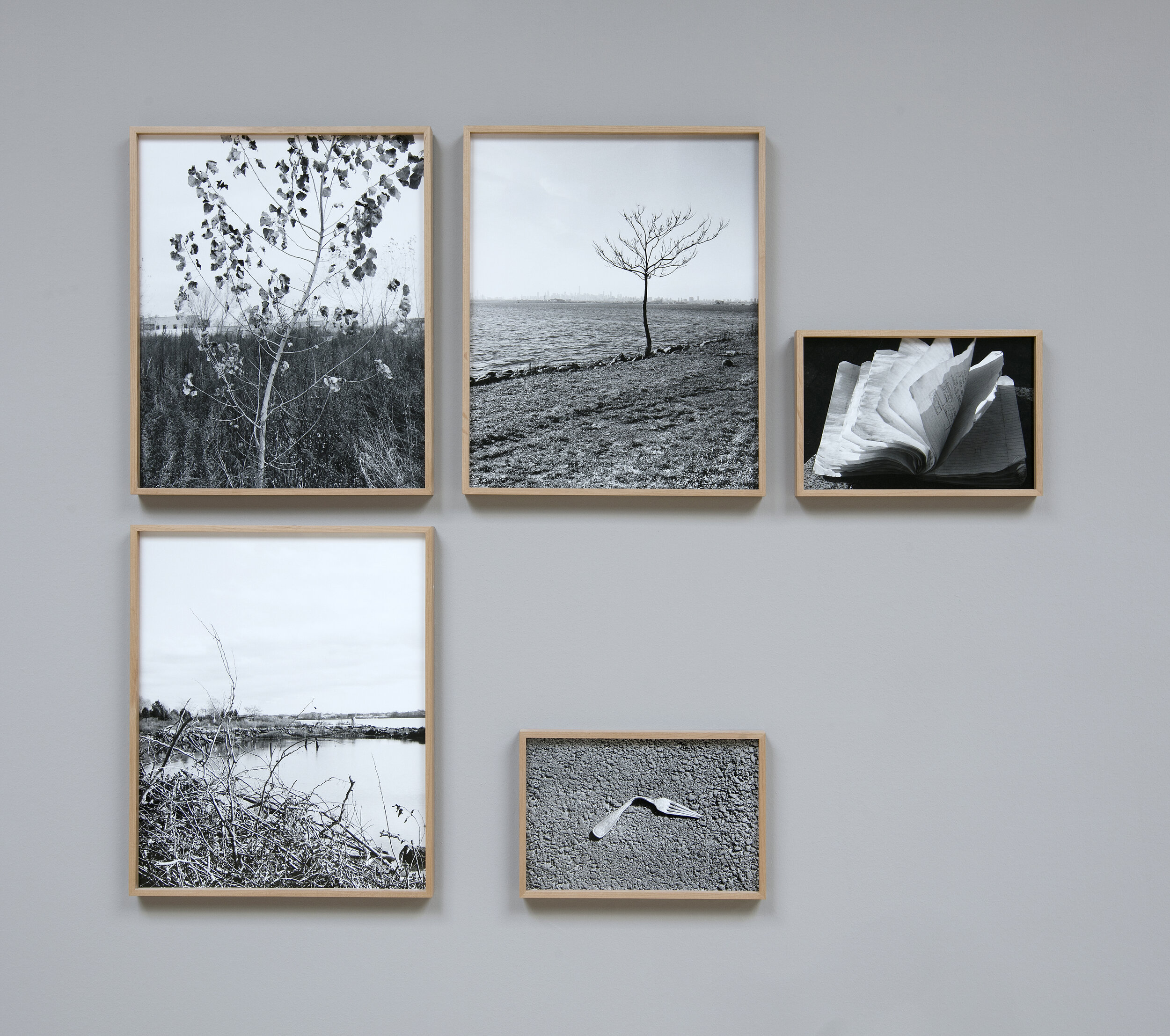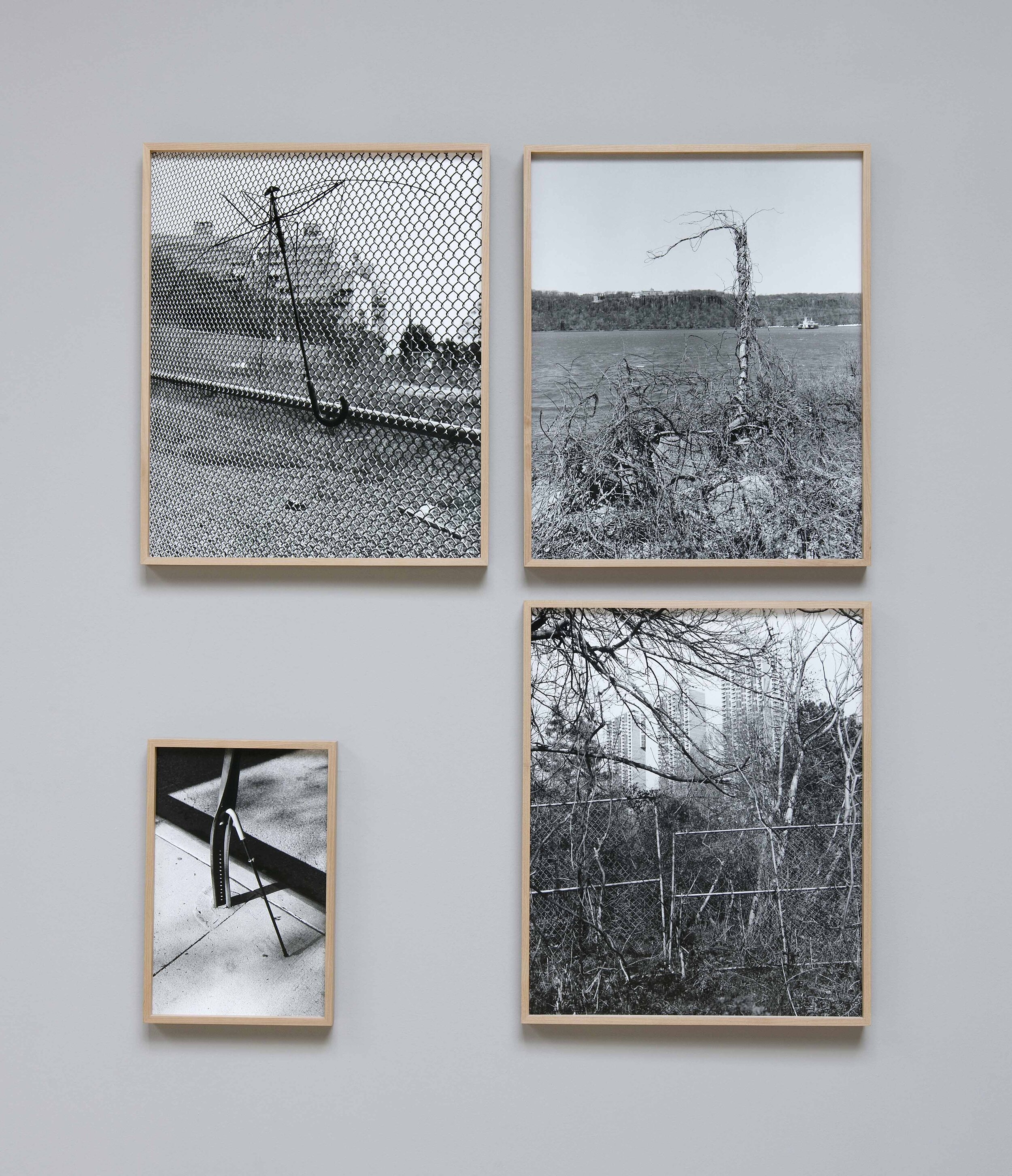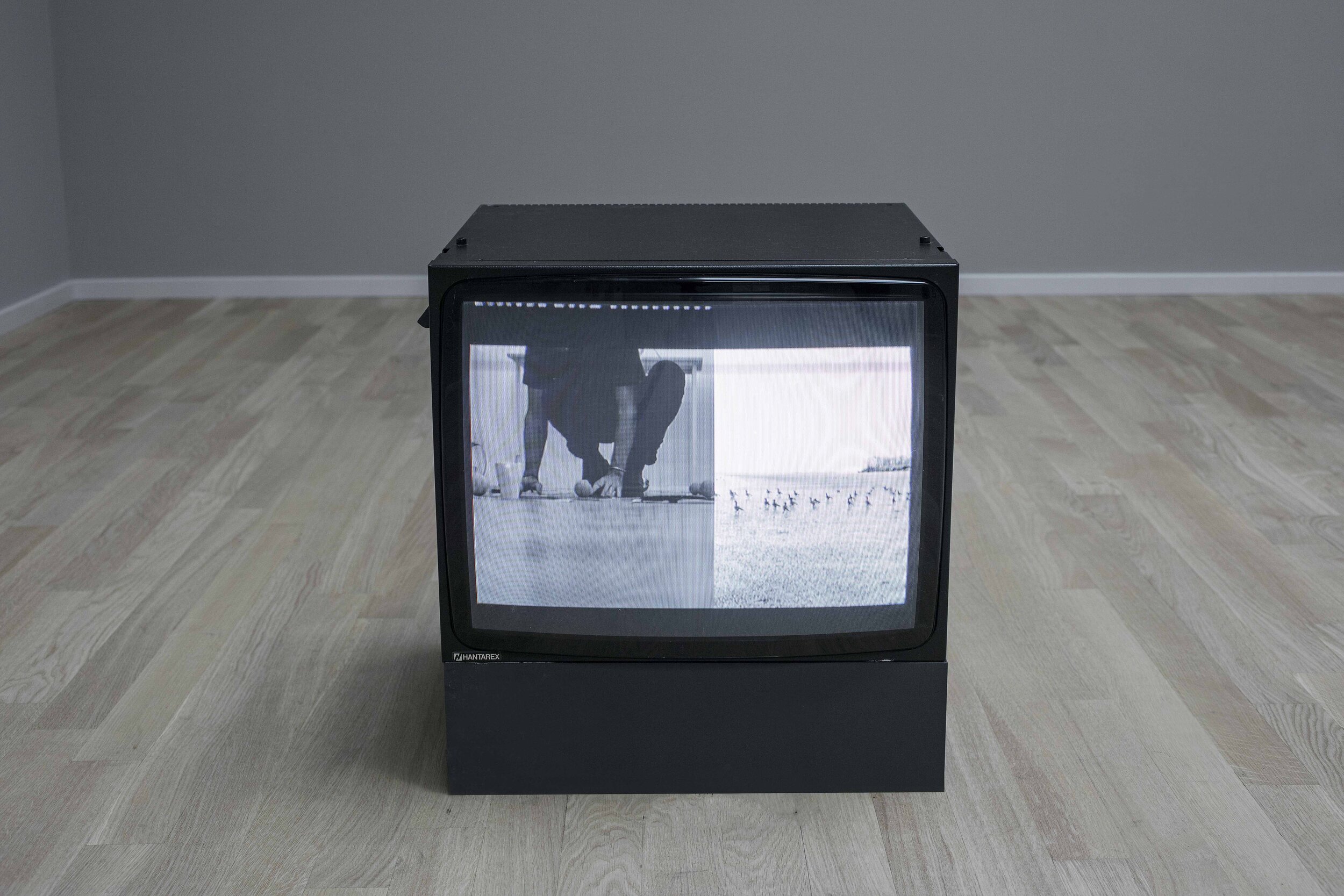IL SUONO DEL BECCO DEL PICCHIO, 2020
Walking
During the spring of 2016, I decided to walk along all the borders of the city. I was living with Francesca in Harlem, on 123rd Street and Manhattan Avenue, on the third floor of a redbrick house with a white ceramic pheasant staring out from a windowsill in the living room. Sometimes I would go around on foot. Other times, on my bicycle, I would reach the end of the subway line, chain my bike to a post and start walking until I was dead beat. I would carry a rucksack with me for my cameras, a Zoom sound recorder, a notebook and pen, lots of HP5 400 medium format black-and-white film rolls, a map, water flask, some energy bars, and an apple. I plowed the edges of the five boroughs of the city which, in all their diversity, make up the overall image of New York. I walked and photographed my way around its perimeters because I wanted to see the most hidden areas, photography books and Google Maps aside: green areas often surrounded by metal fencing and where it is still possible to carve out a corner of silence where to reflect on the sense of a distance from home.
The fencing that surrounds the city often made it impossible for my body and even my gaze to go beyond, and I would remain this side, trying to sidestep the bionic eyes of CCTV cameras and the signs inviting me to “Keep Out”. If I found a gap in the nets, often not without feeling rather ill at ease, I would squeeze my way through to the other side. I would frequently come to the end of a street and find myself faced with a yellow sign with the word “End”. Very often, in front of those gray corners of the city, while biting into a bagel, I would say to myself: What Am I Doing Here?
The end of those streets marked the border between the concrete of the city and the green areas, the polluted canals, the lagoons, and the ocean beaches. Most of the time I took photographs in a state of almost unreal peace and silence, in those places where the thick concrete jungle suddenly thins out and nature takes over once more; the water finds beaches on which to deposit its debris, and the ear finds the ideal dimension to listen to the sound of the city, both near and far at the same time.
In these areas of spontaneous vegetation, Canada geese lay their eggs and Atlantic horseshoe crabs—strange ocean creatures—wash up on the sand, complete with their primordial shells, reminding us that New York City might just be a ghost town emerging from the abyss of millions of years ago, or might be destined to suddenly plunge back into the gray ocean waters.
I left out lots of photographs. Although not visible, those missing bear the same weight—both geographic and affective—of all the others to be found in this book, because they punctuated my journey along the perimeter of the city, marking the rhythm of my days through the various seasons just as much as the others. If I were to start my long walk around the city all over, I would probably have produced a different book from the one in front of me as I write this introduction. But something would remain unchanged: my constant thinking back to where I come from, where I’m going and at what speed.
I edited this book during the winter of 2018 and spring 2019 in my studio in via Padova, Milan, the map of New York City always open on my desk, covered in red, yellow, and blue dots, which accumulated over the course of my walks. Those colors stood for points of the city which had had a particular significance for me, and in the form of photographs in this book, I hope they may evoke a lesser-known city, more rough and real, where it is still possible to observe nature with a sense of awe, and lose yourself for an instant in the gaze of a deer on Staten Island, perhaps in the parking lot in front of a Dunkin’ Donuts.
The photographs that I chose to tell the story of the five chapters in this book spent a long time lying on the floor of my studio in Milan, being mixed together in the continuous reinterpretation of hindsight. The book not only tells the story of the edges of the city that I traced on foot between 2016 and 2018, but also the numerous periods in which I went back to Italy and thought over my journey, walking around the perimeter of my studio. I see the geography of places as an elastic image that may be lengthened and shortened as our mood would have it, as well as our ability to link together stories that are very far from one another in subject and time, like points of a constellation. Narrating through images is, above all, a way to imagine another possible world because “if there is any one thing that global warming has made perfectly clear it is that to think about the world only as it is amounts to a formula for collective suicide.” And so, as Amitav Ghosh said in his latest illuminating essay The Great Derangement, in order to have any chance of survival, “we need, rather, to envision what [another world] might be.” For me, walking around the edges of New York City was also a way of imagining other realities: some close by, some light years away.
Global view of the installation, Accademia Carrara, Sala delle Barchesse, GAMeC Bergamo, 2020
FIVE WALKS. NEW YORK CITY, SOUND INSTALLATION
Partial view of the installation, Accademia Carrara, Sala delle Barchesse, GAMeC Bergamo, 2020
From the series: End. Words from the margins: New York City. Black & White print on barite paper, 60x50 cm, framed, 2019
The Rest of The Images, digital video, black & white and colour, sound, 13’ Loop, 2019
The Rest of The Images, still from the video, digital, black & white and colour, sound, 13’ Loop, 2019
Totem, bronze scolpture, 55x20x20 cm, pedistal variable dimension, wood, plexiglass, 2020
Horseshoe Crab, bronzo scolpture, 10x20x40 cm, pedistal variable dimension, wood, plexiglass, 2020
Antonio Rovaldi / END – Parole dai margini / GAMeC
A Bodily Relationship with Territory: End. Words from the Margins - New York City, by Karen Schiff
End. Words from the Margins - New York City (with Francesca Benedetto and Steven Handel) / Harvard Graduate School of Design
Traces Along The Edges, by Mariana Mogilevich
Antonio Rovaldi ZERO
all images © Antonio Rovaldi / Antonio Maniscalco / GAMeC



